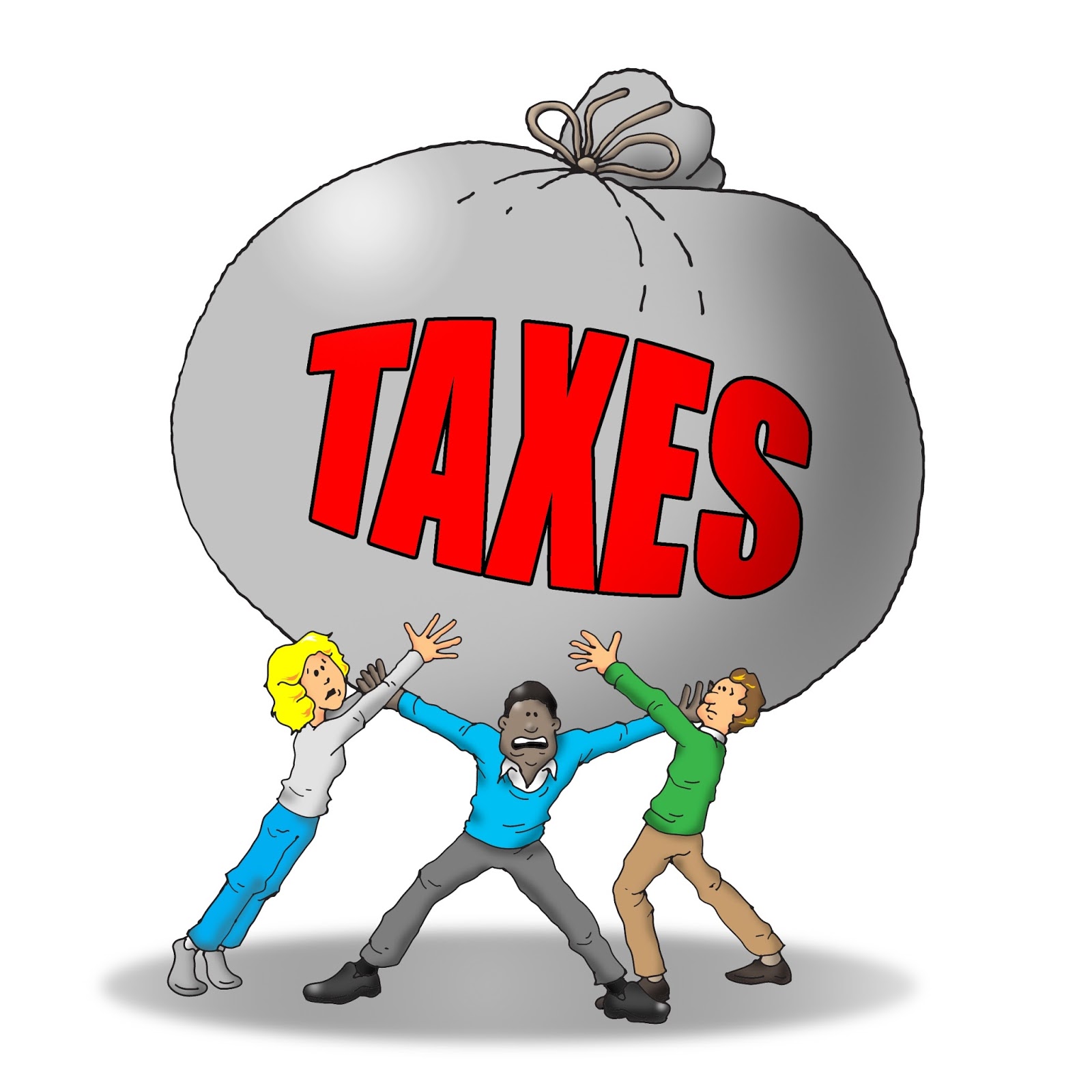Hey there, fellow taxpayer! Let’s face it—taxes can be as confusing as a bad Wi-Fi connection, but they’re an essential part of life. Whether you’re a business owner, an employee, or just trying to keep your finances in check, understanding taxes is crucial. In this guide, we’ll break down everything you need to know about taxes, from the basics to advanced strategies, so you can save money and avoid headaches. No more sleepless nights wondering if you filed correctly!
Taxes might sound intimidating, but they don’t have to be. Think of them as a necessary evil that helps fund public services, infrastructure, and all the cool stuff that keeps society running smoothly. By the end of this article, you’ll not only understand how taxes work but also learn some tricks to make the process less painful.
So grab a cup of coffee, sit back, and let’s dive into the world of taxes. This isn’t just about numbers—it’s about empowering yourself with knowledge. Ready? Let’s go!
Read also:Dad Jailed For Fatal Trampoline Punishment The Shocking Story That Shook The Nation
Here’s a quick overview of what we’ll cover:
- What Are Taxes?
- Types of Taxes
- How Taxes Are Calculated
- Federal vs. State Taxes
- Deductions and Credits
- The Tax Filing Process
- Common Tax Mistakes to Avoid
- Effective Tax Planning Strategies
- Tax Reform and Updates
- Why Taxes Matter
What Are Taxes?
Taxes are essentially mandatory financial charges imposed by the government on individuals, businesses, and organizations. These funds are used to support public services, such as healthcare, education, infrastructure, and national defense. Think of taxes as the price we pay to live in a functioning society. Without them, roads would crumble, schools would close, and emergency services would disappear. Yikes!
Now, I know what you’re thinking: “Why do I have to pay taxes?” Well, it’s all about fairness and responsibility. Everyone who benefits from public services should contribute their fair share. But don’t worry—there are ways to minimize your tax burden legally. We’ll get into that later.
Why Do Taxes Exist?
Taxes exist for one simple reason: to generate revenue for the government. This money is then allocated to various programs and projects that benefit the public. For example:
- Building and maintaining roads and highways
- Funding public schools and universities
- Providing healthcare services to those in need
- Supporting law enforcement and emergency responders
See? Taxes aren’t all bad—they help keep things running smoothly. But that doesn’t mean you should overpay. Let’s move on to the different types of taxes.
Types of Taxes
There are several types of taxes, each serving a specific purpose. Here’s a breakdown of the most common ones:
Read also:3 Us Women Found Dead In Belize The Shocking Truth Unveiled
Income Tax
Income tax is probably the type of tax you’re most familiar with. It’s levied on the income earned by individuals and businesses. The amount you owe depends on your income level and tax bracket. In most countries, income tax is progressive, meaning higher earners pay a larger percentage of their income.
Sales Tax
Sales tax is a consumption tax added to the price of goods and services at the point of sale. It’s usually a percentage of the purchase price and varies by state or region. For example, if you buy a $100 item with a 5% sales tax, you’ll pay $105 total.
Property Tax
Property tax is assessed on real estate and other tangible assets. Homeowners typically pay property taxes based on the value of their property. This money often goes toward funding local schools and services.
Payroll Tax
Payroll tax is deducted from employees’ paychecks to fund Social Security and Medicare programs. Employers also contribute a portion of payroll taxes. It’s one of those silent taxes that you might not even notice, but it’s there.
How Taxes Are Calculated
Calculating taxes can seem like solving a math problem, but it’s actually pretty straightforward. Here’s a quick rundown:
First, determine your taxable income by subtracting deductions and exemptions from your gross income. Then, apply the appropriate tax rates based on your income bracket. Finally, add any credits or adjustments to arrive at your final tax liability.
For example, if you earn $50,000 per year and fall into the 22% tax bracket, you’ll owe $11,000 in federal income tax before deductions and credits. But don’t panic—there are ways to reduce this amount legally!
Federal vs. State Taxes
One of the biggest sources of confusion for taxpayers is the difference between federal and state taxes. Here’s the scoop:
Federal taxes are collected by the U.S. government and are used for national programs and services. State taxes, on the other hand, are imposed by individual states and fund local initiatives. Some states have no income tax, while others have high rates. It all depends on where you live.
Key Differences
- Federal taxes are uniform across the country, while state taxes vary.
- State taxes often include sales tax, property tax, and excise tax in addition to income tax.
- Federal tax brackets are progressive, while state tax brackets can be flat or progressive.
Understanding the distinction between federal and state taxes can help you plan your finances more effectively.
Deductions and Credits
Now we’re getting to the good stuff—deductions and credits. These are two powerful tools that can significantly reduce your tax bill. Let’s break them down:
Deductions
Deductions lower your taxable income, which in turn reduces your tax liability. There are two main types of deductions:
- Standard Deduction: A fixed amount that most taxpayers can claim without itemizing.
- Itemized Deductions: Specific expenses you can deduct, such as mortgage interest, charitable contributions, and medical expenses.
Choosing between the standard and itemized deduction depends on your personal situation. If you have a lot of qualifying expenses, itemizing might save you more money.
Credits
Credits directly reduce the amount of tax you owe, dollar for dollar. Some popular credits include:
- Child Tax Credit: Provides a credit for each qualifying child.
- Earned Income Tax Credit (EITC): Helps low- to moderate-income workers.
- Education Credits: Cover tuition and related expenses for students.
Take advantage of these credits to maximize your savings!
The Tax Filing Process
Filing your taxes doesn’t have to be a nightmare. With the right tools and information, you can complete the process in no time. Here’s a step-by-step guide:
- Gather all necessary documents, such as W-2s, 1099s, and receipts for deductions.
- Choose your filing status (single, married filing jointly, etc.).
- Decide whether to file electronically or by mail. E-filing is faster and more secure.
- Fill out the appropriate forms, such as Form 1040 for individuals.
- Review your return carefully to avoid errors.
- Submit your return by the deadline, usually April 15th.
And that’s it! You’re officially a tax-filing pro.
Common Tax Mistakes to Avoid
Even the savviest taxpayers make mistakes from time to time. Here are some common errors to watch out for:
- Missing deadlines: Late filing can result in penalties and interest.
- Forgetting deductions and credits: Double-check your eligibility for all available breaks.
- Incorrect Social Security numbers: Double-check all numbers to avoid processing delays.
- Math errors: Use a calculator or tax software to ensure accuracy.
- Not keeping records: Save copies of your returns and supporting documents for at least three years.
Stay vigilant, and you’ll avoid costly mistakes.
Effective Tax Planning Strategies
Tax planning isn’t just for the wealthy—it’s for everyone who wants to optimize their finances. Here are some strategies to consider:
Maximize Retirement Contributions
Contributing to retirement accounts like 401(k)s and IRAs can lower your taxable income and grow your savings. It’s a win-win!
Take Advantage of Tax-Advantaged Accounts
Accounts like Health Savings Accounts (HSAs) and 529 plans offer tax benefits for specific expenses. Explore these options to save more.
Consider Tax Loss Harvesting
If you invest in stocks or mutual funds, tax loss harvesting can help offset gains and reduce your tax liability. Consult a financial advisor for guidance.
Tax Reform and Updates
Tax laws are constantly evolving, so it’s important to stay informed. Recent reforms, such as the Tax Cuts and Jobs Act (TCJA), have made significant changes to the tax code. Key updates include:
- Increased standard deduction amounts.
- Lower tax rates for most income brackets.
- Changes to itemized deductions, such as limiting state and local tax deductions.
Stay up-to-date with the latest changes to ensure compliance and maximize savings.
Why Taxes Matter
Taxes might not be the most exciting topic, but they’re essential for a functioning society. By paying your fair share, you contribute to the greater good and help create a better future for everyone. Plus, understanding taxes empowers you to make informed financial decisions and avoid costly mistakes.
So the next time you grumble about paying taxes, remember that they’re an investment in our collective well-being. And hey, with the right strategies, you can even turn taxes into an opportunity to save money.
Kesimpulan
And there you have it—a comprehensive guide to mastering taxes. From understanding the basics to implementing advanced strategies, you now have the tools to take control of your financial obligations. Remember:
- Taxes fund important public services and programs.
- There are various types of taxes, each with its own purpose.
- Deductions and credits can significantly reduce your tax bill.
- Proper planning and staying informed are key to optimizing your taxes.
Now it’s your turn! Share this article with your friends, leave a comment with your thoughts, or explore other resources on our site. Together, we can demystify taxes and make them less intimidating. Happy filing!


